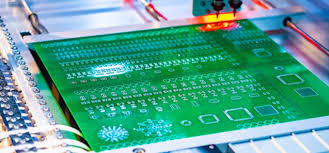Flexible Printed Circuit Boards are changing the industry as they offer benefits that traditional rigid PCB cannot. Not only do they enhance product design and function, but they also open new doors for a range of hot industries including consumer electronics, medical devices, and automotive tech. These trends rely on the benefits provided by flexible PCBs as follow.
Smaller Size and Dynamic Construction
One of the main benefits of these products is that they make device design more versatile and compact. While the traditional rigid PCBs limit form factors due to their lack of flexibility and the size of their electronic components, the former can be bent, folded, and maneuvered around edges, fitting into limited or unusual spaces. For example, today’s latest generation smartphones rely on flexible PCBs to connect components across the hinges of foldable devices to ensure their functionality and reliability.

Advancement of Wearable Technology
Wearable technology has only been advancing because of the improved benefits provided by the circuit boards. Due to their small size, weight, and flexibility that supports the odd shapes of devices, these boards are able to work in conditions similar to those found in smartwatches, fitness trackers, or various medical devices. They are perfectly able to remain on patient bodies and withstand constant bending or folding, as it is the case in the new generation of fitness bands. The devices use batteries, chargers, and flexible PCBs capable of surviving 1 – 10,000 bends or more.
Reliability and Durability
Flexible PCBs are much more reliable than their traditional predecessors as they improve functionality. They are more stress-resilient, as demonstrated in a study when a high-stress PCB application, common in automotive use, was used. It required the components to endure mechanical vibrations and thermal cycles over an extended time period. After the performance of both types of circuit boards was monitored, results showed a difference of almost 30% in failure rates, highlighting the benefits of the former.
Better Manufacturing Costs
While the initial cost of these products is high, they require less material and cost less when produced on a larger scale. They replace wire as the electronic connection between the device’s components and are also able to replace multiple interconnects, which is cost-saving. Cameras and smartphones are an example of better assembly times through the use of flexible PCB. These and other examples show that the boards are currently changing the industry by setting new standards that others need to follow, backing this trend into other high-tech industries.